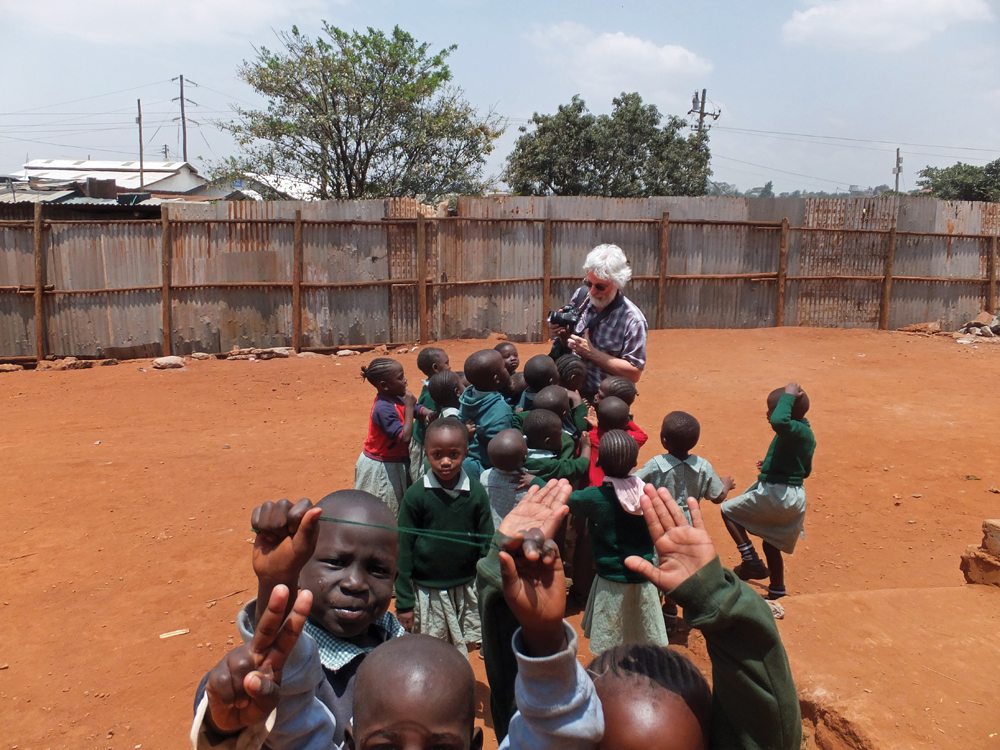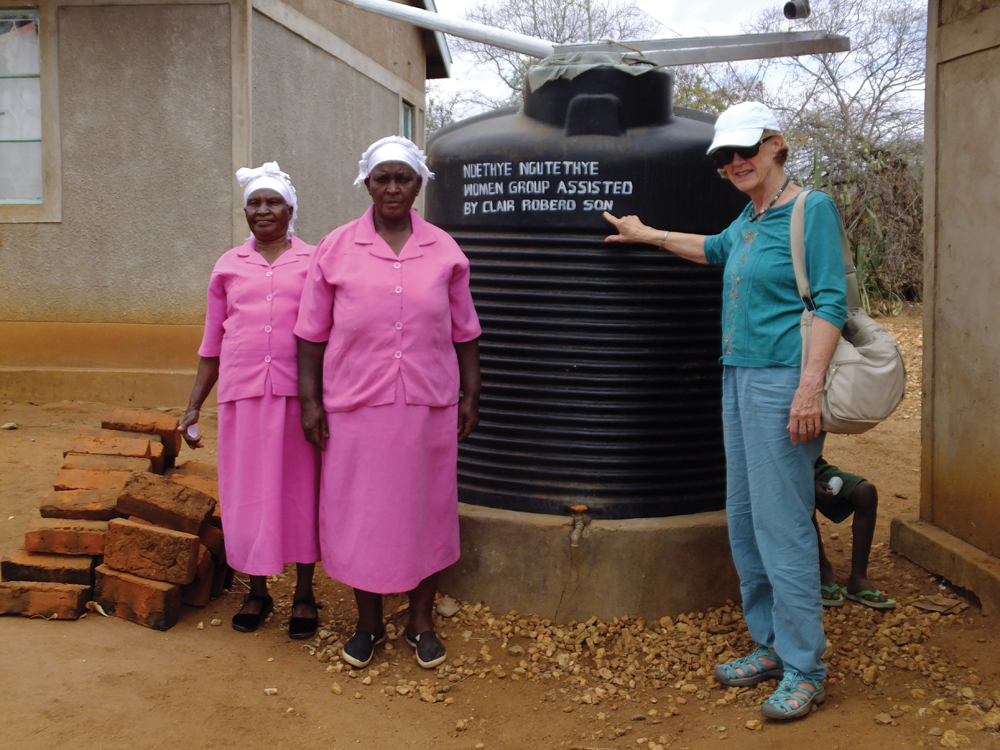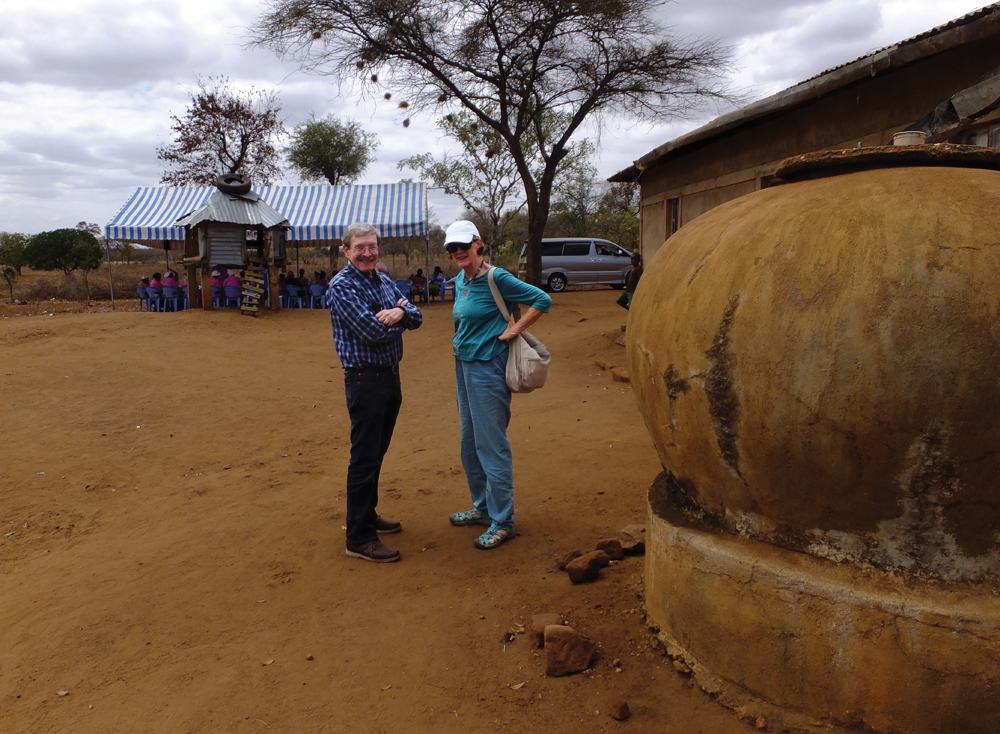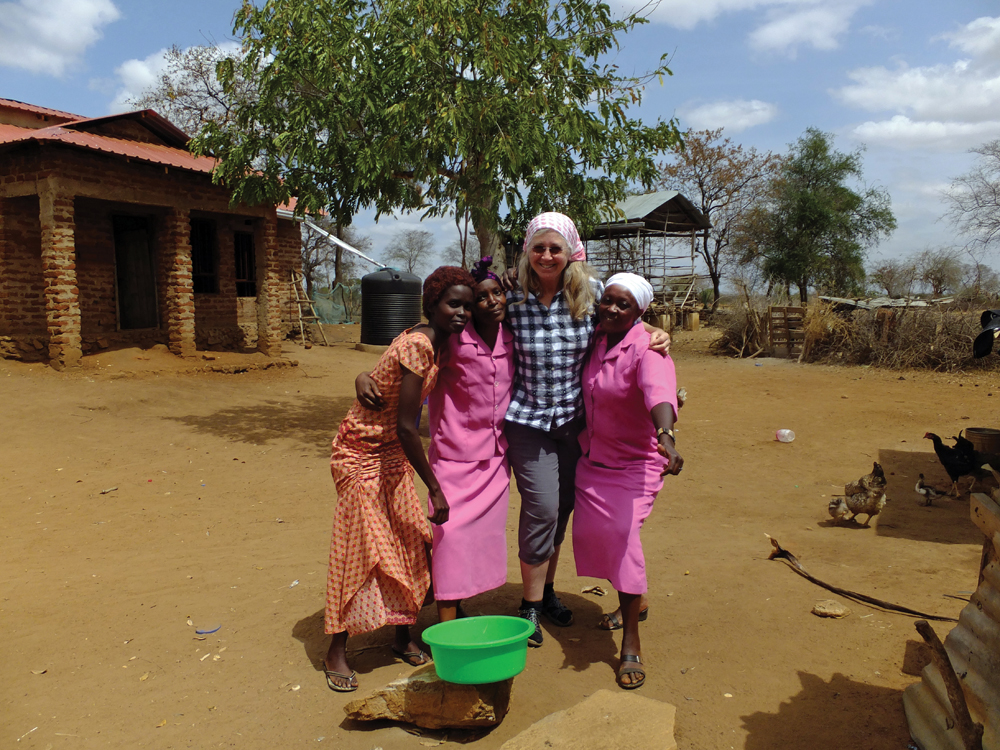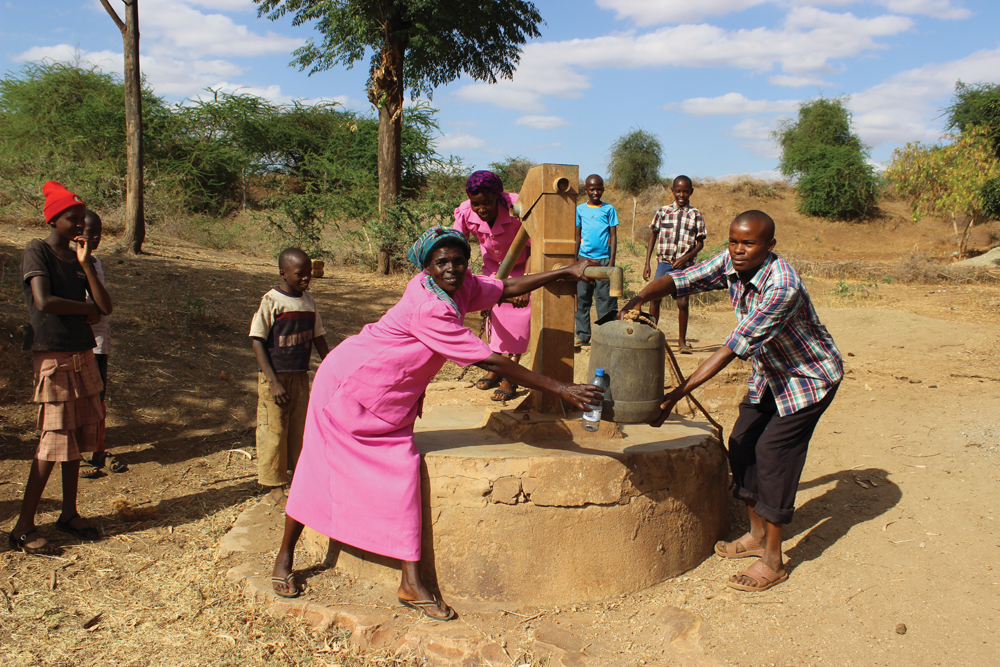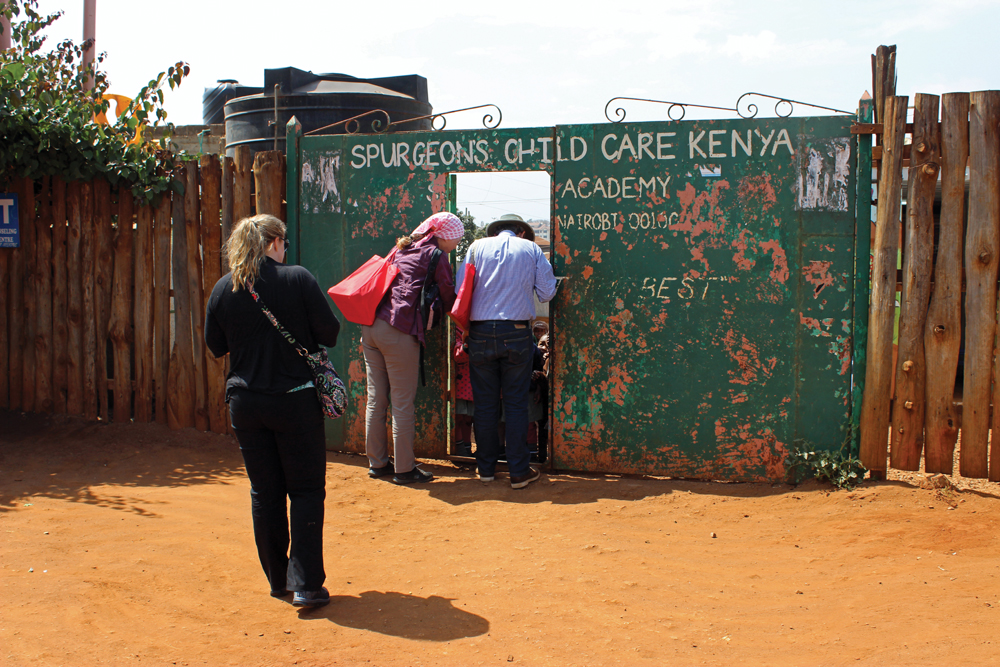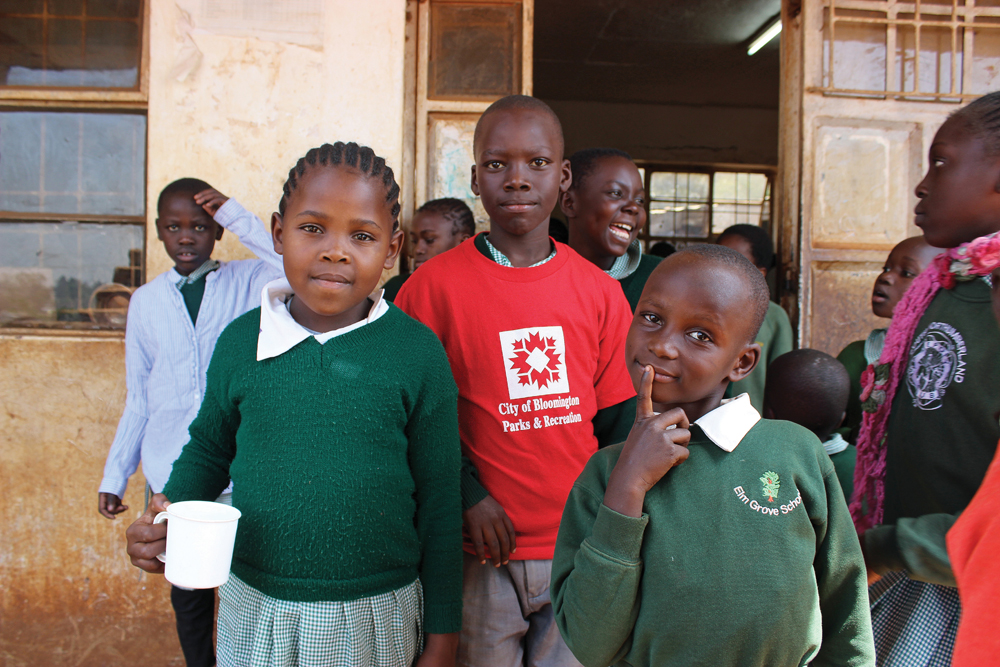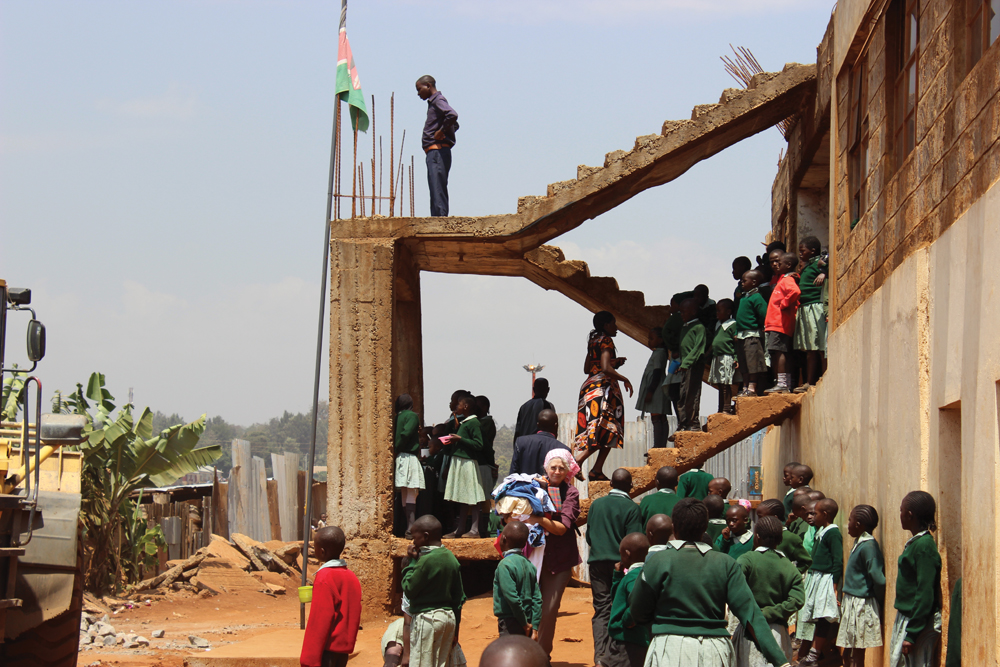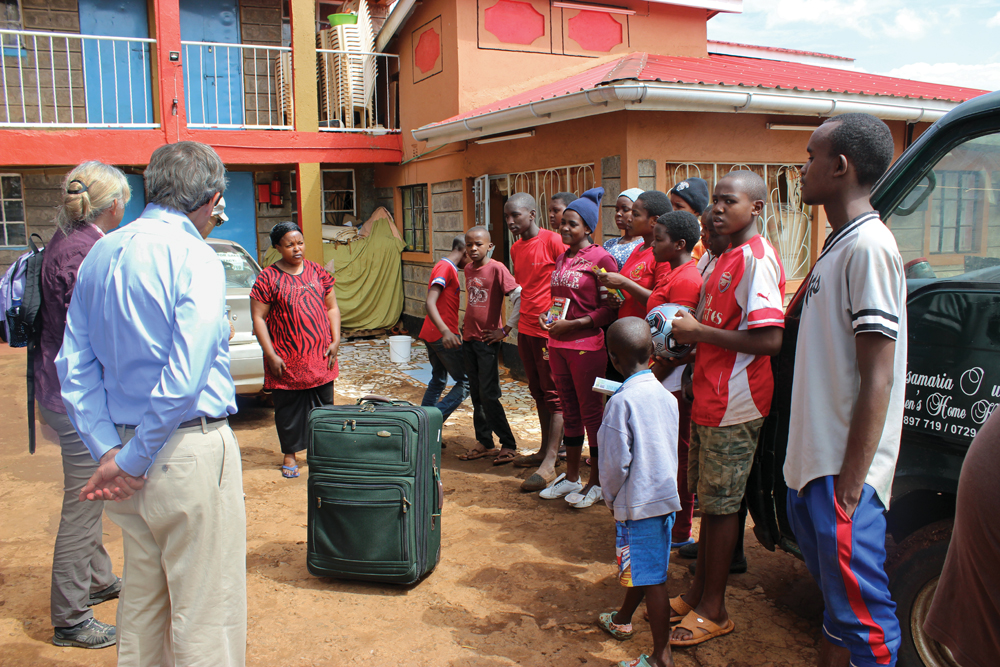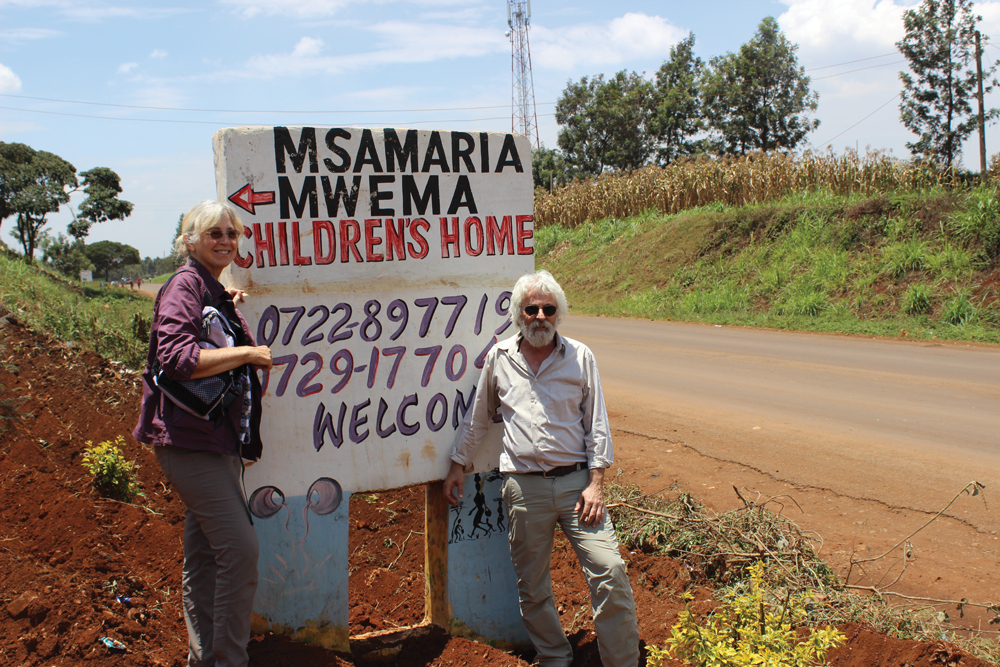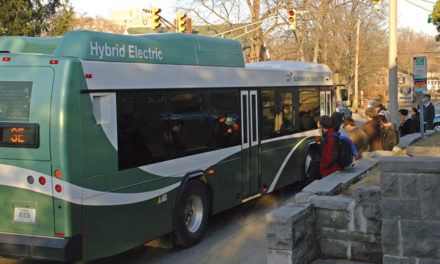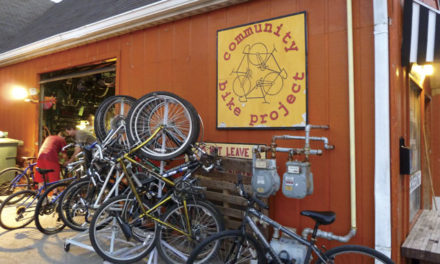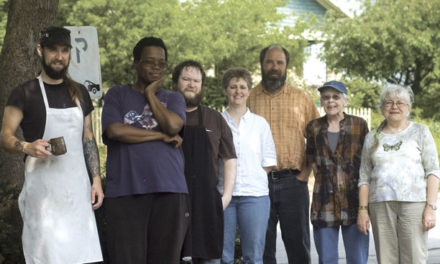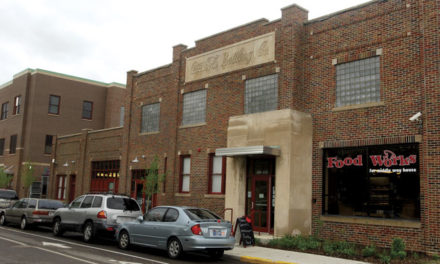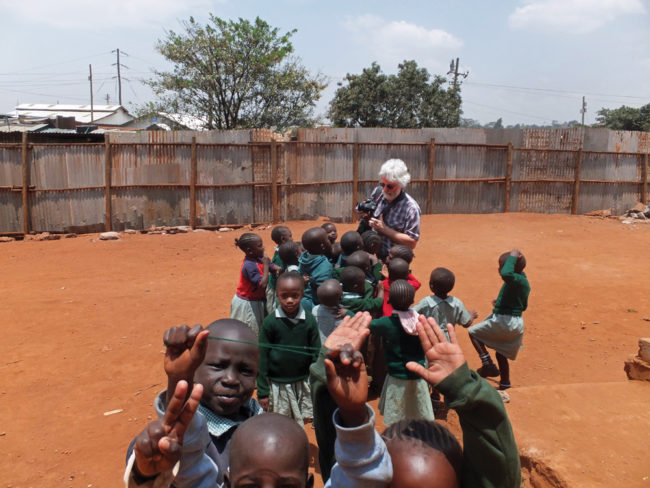
Children at Spurgeons mob Peter Dorfman to get a glimpse of themselves in the photos he has taken. Photo by Olivia Dorfman
BY OLIVIA AND PETER DORFMAN
In September, we spent two weeks in Kenya. Months later, we’re still unpacking the experience.
We traveled with a group of five from the International Outreach Task Force (IOTF) of the Unitarian Universalist Church of Bloomington. The driving force behind IOTF is retired African Studies Professor Claire Robertson and her husband, Ed. At different times, the Robertsons have lived in Africa, and through her fieldwork, Claire developed relationships with several organizations doing altruistic work there.
Since 2001, Claire has led groups every two years to visit these charities. IOTF raises money selling jewelry and glassware its members bring back from these trips, as well as through fundraisers like bake sales, and has raised about $21,000 in the past two years. When the group returns to Kenya, it brings back money and donated clothing.
On our trip, we met the people IOTF supports. Many of them live in desperate circumstances, and many are children, who don’t seem to recognize how truly desperate their circumstances are.
We first visited a cooperative farm east of the capital, Nairobi, run by women. The area hasn’t seen rain for four years, so the women eke out a living gathering and selling firewood, and making and selling bricks. They’ve been using the IOTF money to install new tanks to capture rainwater, but without rain, they’ve had to pay to have water trucked in.
Somehow, though, their spirits are high. They danced out to greet us in matching pink dresses, served us a gracious lunch, and gave us beautiful wood carvings as gifts, delivered with eloquent speeches and hugs.
We also visited Spurgeons Academy, located on the outskirts of Nairobi in Kibera, one of Africa’s largest, most destitute slums. The school educates more than 400 children, many of them AIDS orphans, in an unfinished building, on an annual budget of less than $65,000. The children are fed twice a day—porridge in the morning, beans and corn for lunch. The school had been providing vegetables, too, but they’d run out of money, so there were no vegetables for the kids.
We attended a class in a small dark room with a dirt floor. There were no electric lights and no technology, only a chalkboard and worn wooden benches. But the teacher was dynamic and the lesson was challenging. At first, the kids were curious about the pair of wazungu (white foreigners) observing, but they quickly forgot about us. We were impressed with their inquisitiveness and engagement.
When we distributed the donated clothes we’d brought with us, we were moved to see how delighted kids could be to receive new underwear or a T-shirt. We ate lunch with the children, and a group performed a song and dance for us—a rendition of a popular Kenyan song called Jambo Bwana. Leaving was difficult—once these kids got hold of our hands, they didn’t let go quickly.
Neither would the kids at the Msamaria Mwema (Good Samaritan) Children’s Home, which consists of a small compound with a three-story house and some outbuildings. There, a local couple house and feed 33 orphans of various ages, as well as numerous cows, pigs, and poultry. The operation generates its own biogas for cooking from cow manure. A small patch of hillside serves as a potato field. We spent several hours with the kids, who are bright, ambitious, and optimistic.
Kenya is the economic powerhouse of East Africa, but it doesn’t offer much opportunity for children like these. If they are to have full, adult lives, it will be through their own strength of character—but they seem to have that in abundance.
Our group stayed in a luxurious, secure hotel in an affluent part of Nairobi, and it jolted us to go from there to these ragged places with such basic needs.
On the way back to the United States, we spent a day in Frankfurt, Germany, and happened upon a huge international auto show. We’d just come from a place where $30 could start a small business, and here we were looking at Bugattis and Lamborghinis. The inequities in the world economy suddenly seemed much more personal.
Check out this photo gallery of pictures from the trip.


